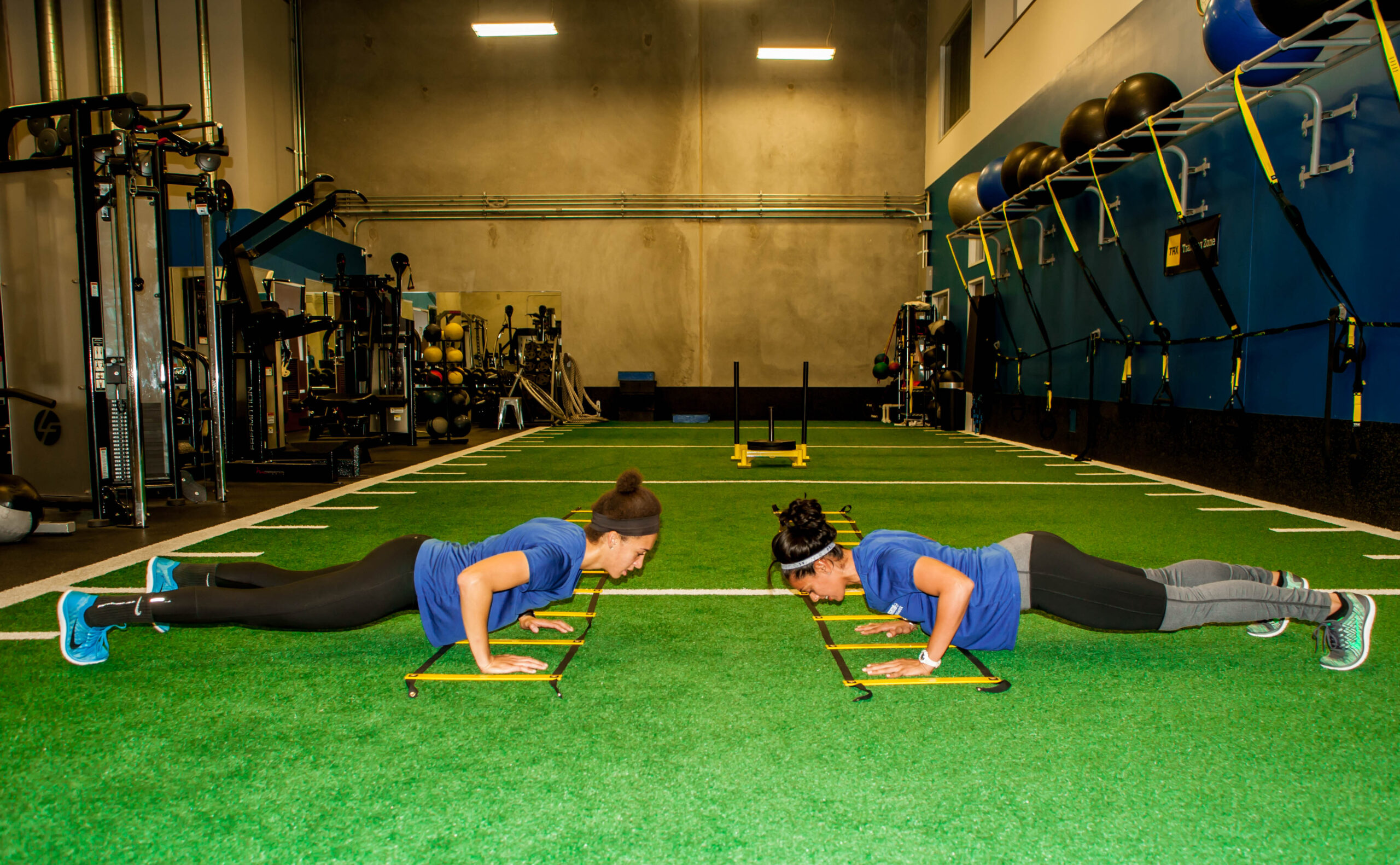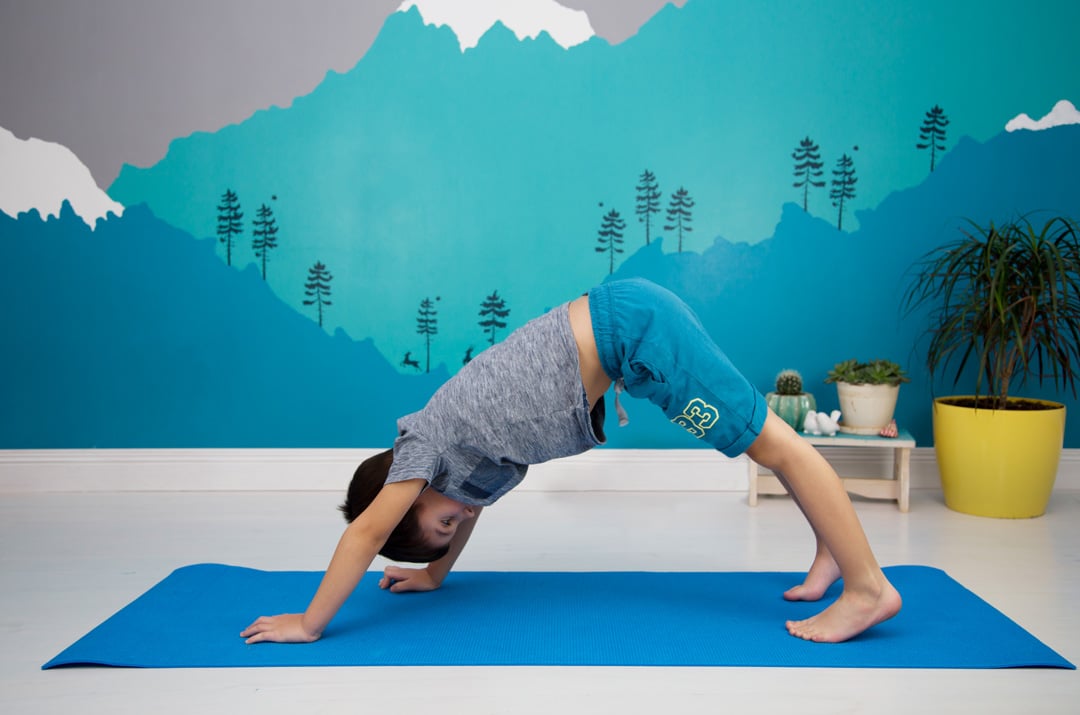Women and Weights
Do They Go Together?
The age-old problem of women wanting to work out, but not get ‘bulky’ is one we all know well…and the majority of you are still worried about. It is argued back and forth, many arguments are not validated and quite frankly are uneducated. Now I understand that everyone has their own idea as to what they want to look, and feel like, and I completely respect that. The truth is yes, lifting weights can cause you to gain muscle mass; but what is also true is that weight training is one of the most effective and efficient ways to burn fat, and also can lead to improving an extensive list of physiological attributes in the process. This article is intended to remove false information related to the topic and open your mind to reaching your training goals through the use of integrating weight training into your fitness regime. One of my many goals with these articles is to remove stigmas associated between genders, training and body image.
Let’s think about this for a second: If you are training cardio and you want to push yourself harder and burn more calories, you would increase some sort of resistance wouldn’t you? If this is the case, weight training is exactly the same way of thinking, it too increases resistance. In simple terms, the more resistance means the more energy it takes leading to quicker and greater results. Why then are weights considered taboo but increasing the resistance on a bike, rowing machine or sprint is considered good for you?
Now the term ‘tone’ is one of the most common terms I hear that women want to achieve from a training program. But while they want to ‘tone’, they don’t want to get ‘bulky’. But guess what?… It’s the same thing! Toning is filling in softer parts of the body. This is done by muscle hypertrophy, muscle growth. Muscle growth over time results in what some may consider being ‘bulky’. And yes this is more often than not, achieved through weight training. Weight training should not be associated with huge masculine muscles but rather a large array of health improvements for everyone from a healthy child to a disabled elderly person and everything in between.
Because of this, there is an important point I would like to make, and I can’t stress this enough: For an individual, particularly a woman, to get in a highly muscular state is incredibly grueling and downright hard work. The time, effort and money that is required to be invested into making those women ‘bulky’ is staggering. The sheer amount of food that is required, plus supplementation, plus genetic makeup, plus type of training program, plus questionable substances is on such a large scale, that for you to ever reach that level it would require such dedication, drive, and time. You must understand that no one has ever just one day accidentally woken up and found themselves a muscle bound person. The reality of it is very much the opposite. But hypothetically, lets say that you ‘accidentally’ do all of these things right, eating many meals a day, training very heavy and consistently, persisting week in week out, progressively overloading your training sessions over time, and you continue this trend for years. Considering all of this, you will still have the massive hurdle of your genetic makeup you are born with, as well as the obvious testosterone difference between men and women. Testosterone plays a very large role in the speed and ability of muscle growth and can limit how big the muscle can actually get. As women, your levels are on average 10% compared to that of men, seriously limiting the overall ability to become incredibly masculine.
Thankfully though, if you do reach a stage that you consider being too bulky (particularly specific body parts like arms and shoulders), there is an answer. Despite common belief, you will not be stuck with this ‘bulky’ physique forever. The great thing about muscle growth is that it goes away so much faster than you can put it on. It’s amazing what a couple of changes in training variables can do to the training outcomes (that’s why I have a job). You don’t just stop weight training as soon as you think you are getting a bit too toned, you just make minor adjustments. Another great benefit of an added muscle mass is the greater caloric burn every minute of every day! How good is that!?
As with most training protocols, the variables that you can change to alter the resulting effects of the program are things like:
- Increasing intensity (weight, repetitions, sets)
- Decreasing rest time
- Increasing sessions/week
- Increasing compound lifts (larger muscle groups)
The benefits of this type of training are incredibly lengthy however these are some of the amazing physiological adaptations that result from it, benefiting all individuals across the board:
- Strength
- Endurance
- Power
- Muscle fibre size
- Peak aerobic capacity
- Muscular endurance
- Decreased body fat
- Increased lean body mass
- Cardiopulmonary function
- Increased EPOC (energy burning after training session)
- Increased bone density
- Increased range of motion
- Increased neurological function
- Increased strength of connective tissue (tendons, ligaments etc.)
- Improved blood pressure
- Insulin resistance
- Blood lipid profile
Other changes:
- Increased energy
- Improved psychology
- Improved brain power
- Better sleep
- Better posture
- Increased flexibility and joint range of motion
- Ease of daily tasks
- Delayed decrement of muscle fibres in elderly
- Decreased chance of falls
While you may look at these and think, ‘I can get most of that from my training already’. You are absolutely correct. However the speed at which weight training can cause these adaptations is a much faster progression than that of a low intensity cardio session, and requires less training time per session. On top of this, the extra power, strength and bone density that you gain are responsible for fall prevention, increased daily independence, and huge decrease in the risk of broken bones (largely responsible for a decrement of health for elderly). Plus the speed at which fat can be lost through weight training is staggering, requiring an incredibly high amount of energy each time you step foot in the gym. Finally, it can also be fun; learning new movements, pushing yourself mentally and physically, and stepping outside your comfort zone. You don’t want training to feel like a chore, because chances are, you’ll get over it and stop.
There are many ways to integrate weight training into your training schedule, and it’s completely up to you as to how much you would like to. You could change your whole outlook and start training numerous days a week, or just put one or two days in around cardio or HIIT. It is great to open your mind to new types of training, even if it goes against what you believe. What’s the worse that could happen? You may be surprised. Its not like there’s any negative affects that could occur. Regardless of how many times you are doing it a week there is always a place for cardio training or HIIT as the endurance related adaptations and overall health benefits from these are incredibly important for longevity, quality of life and prevention of disease.
Glenny’s Tips:
- Don’t be afraid to lift some heavy weight, you won’t bulk up overnight, just do it safely!
- It’s easier to lose muscle than gain it. If there’s a body part that you think is getting too muscular, don’t stop lifting weights; just limit the amount of exercises that are targeting that body part.
- Start slow, see how your body reacts and go from there.
I could talk for hours about this, however I don’t want to bore you too much or give too much information at once. Keep in mind this is a very simplified introduction to weights training for women. Get out of your comfort zone, experiment; train hard and most importantly, HAVE FUN! The rewards will come. If you would like any more information, feel free to contact the Fortis Team!
AND REMEMBER! THE BEST TYPE OF EXERCISE IS THE EXERCISE YOU ENJOY!
About Glenn Ferguson:
Fortis Fitness & YOGALUX Personal Trainer
I’m a native Australian now located in sunny San Diego, on a mission to bring clarity to the world of fitness. With the copious amount of articles pushed out every single day promoting a new study or workout routine that all seem to contradict one another, it’s no wonder so many people are confused and don’t know where to look for legitimate information. It’s time to go back to the basics. I am here to simplify scientific mumbo jumbo and present it to you in a clear, easily digestible way. You will understand not only what to do, but why.
Rest assured, you’re now in good hands: I have my Bachelor’s degree in Sports and Exercise Science from the University of Technology, Sydney. I also have years of experience working with clients ranging from elite athletes wanting to excel in their sport to middle-aged men and women looking to lose a couple of pounds or simply maintain a healthy lifestyle.Every journey needs direction, and the road to health is no different. Use this blog as your map to achieve your personal fitness goals and see how far you can go.
Article References:
- Beachle, T.R & Earle, R.W. 2008, Essentials of Strength Training and Conditioning,
- 3rd ed. National Strength and Conditioning Association: Human Kinetics.
- Fielding, R.A., LeBrasseur, N.K., Cuoco, A., Bean, J., Mizer, K., Fiatorone Singh,
- M.A. 2002, ‘High-velocity resistance training increases skeletal muscle peak power in older women’, Journal of American Geriatric Society, vol. 50, pp. 655-662.
- Hagerman, F.C., Walsh, S.J., Staron, R.S., Hikida, R.S., Gilders, R.M., Murray, T.F., Toma, K., Ragg, K.E. 1999, ‘Effects of high-intensity resistance training on untrained older men. I. Strength, cardiovascular, and metabolic responses,’ The Journals of Gerontology, vol. 55, No. 7, pp. B336-B346.
- Kraemer, W.J. & Ratamess, N.A., 2004, ‘Fundamentals of resistance training: progression and exercise prescription, American College of Sports Medicine,pp. 674-688.
- Kraemer, W.J., Nindl, B.C., Ratamess, N.A., Gotshalk, L.A., Volek, J.S., Fleck, S.J., Newton, R.U., Hakkinen, K. 2004, ‘Change in muscle hypertrophy in women with periodized resistance training’, American College of Sports Medicine, pp. 697-708.
- Kraemer, W.J., Volek, J.S., Clark, K.L., Gordon, S.E., Incledon, T., Puhl, S.M., Triplett-McBride, T., McBride, J.M., Putukian, M., Sebastianelli, W.J. 1997, ‘Physiological adaptations to a weight-loss dietary regimen and exercise programs in women’, Journal of Applied Physiology, vol. 83, No. 1, pp. 270-279.
- McArdle, W.D., Katch, F.I. & Katch, W.L. 2010. Exercise Physiology: Nutrition, Energy, and human performance, 7th ed. Lippincott Williams & Wilkins, a Wolters Kluwer business.
- Martyn-St James, M. & Carrol, S. 2006, ‘High-intensity resistance training and postmenopausal bone loss: a meta-analysis’, International Osteoporosis Foundation and National Osteoporosis Foundation, Vol. 17, pp. 1225-1240.
- Marx, J.O., Ratamess, N.A., Nindi, B.C., Gotshalk, L.A., Volek, J.S., Dohi, K., Bush, J.A., Gomez, A.L., Mazetti, S.A., Fleck, S.J., Hakkinen, K., Newton, R.U., Kraemer, W.J. 2000, ‘Low-volume circuit versus high-volume periodized resistance training in women’, Official Journal of the American College of Sports Medicine, pp. 635-643.
- Ogawa, K., Sanada, K., Machida, S., Okutsu, M. & Susuki, K. 2010, ‘Resistance exercise training-induced muscle hypertrophy was associated with reduction of inflammatory markers in elderly women,’ Mediators of Inflammation, pp.1-7
- Seynnes, O.R., de Boer, M. & Narici, M.V. 2007, ‘Early skeletal muscle hypertrophy and architectural changes in response to high-intensity resistance training’, Journal of Applied Physiology, vol. 102, No. 1, pp. 368-373.
- Staron, R.S., Karapondo, D.L., Kraemer, W.J., Fry, A.C., Gordon, S.E., Falkel, J.E., Hagerman, F.C., Hikida, R.S. 1994, ‘Skeletal muscle adaptations during early phase of heavy-resistance training in men and women’, American Physiological Society, pp. 1247-1255.








